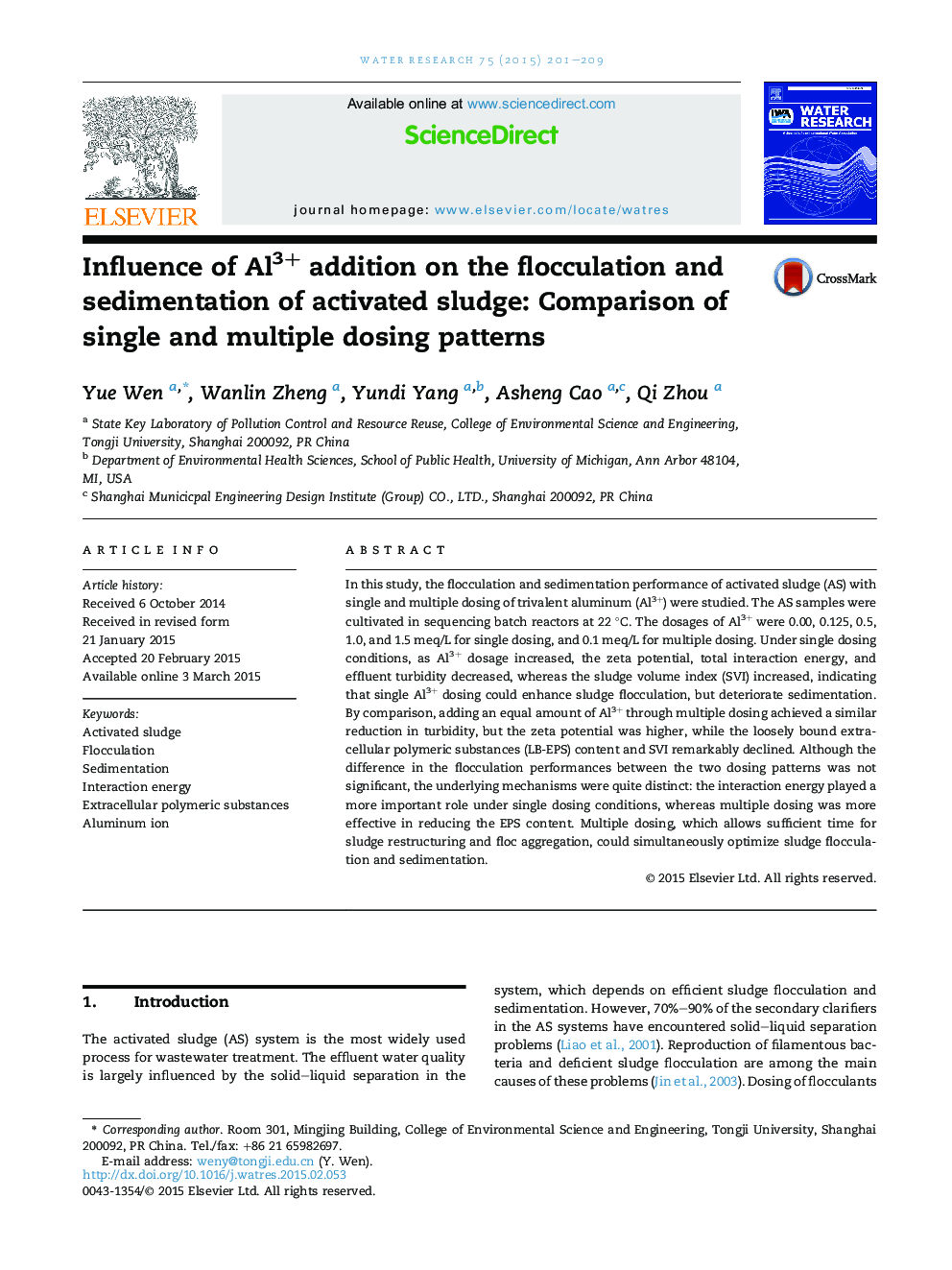| Article ID | Journal | Published Year | Pages | File Type |
|---|---|---|---|---|
| 4481210 | Water Research | 2015 | 9 Pages |
•The mechanism of AS flocculation and sedimentation with Al3+ addition was studied.•Interaction energy reduction of single dosing was more than that of multiple dosing.•Change in the EPS content dominated AS flocculation in multiple dosing.•The AS settleability followed opposite trends under the two dosing conditions.•The reaction time governed the flocculation and sedimentation of AS.
In this study, the flocculation and sedimentation performance of activated sludge (AS) with single and multiple dosing of trivalent aluminum (Al3+) were studied. The AS samples were cultivated in sequencing batch reactors at 22 °C. The dosages of Al3+ were 0.00, 0.125, 0.5, 1.0, and 1.5 meq/L for single dosing, and 0.1 meq/L for multiple dosing. Under single dosing conditions, as Al3+ dosage increased, the zeta potential, total interaction energy, and effluent turbidity decreased, whereas the sludge volume index (SVI) increased, indicating that single Al3+ dosing could enhance sludge flocculation, but deteriorate sedimentation. By comparison, adding an equal amount of Al3+ through multiple dosing achieved a similar reduction in turbidity, but the zeta potential was higher, while the loosely bound extracellular polymeric substances (LB-EPS) content and SVI remarkably declined. Although the difference in the flocculation performances between the two dosing patterns was not significant, the underlying mechanisms were quite distinct: the interaction energy played a more important role under single dosing conditions, whereas multiple dosing was more effective in reducing the EPS content. Multiple dosing, which allows sufficient time for sludge restructuring and floc aggregation, could simultaneously optimize sludge flocculation and sedimentation.
Graphical abstractFigure optionsDownload full-size imageDownload high-quality image (187 K)Download as PowerPoint slide
